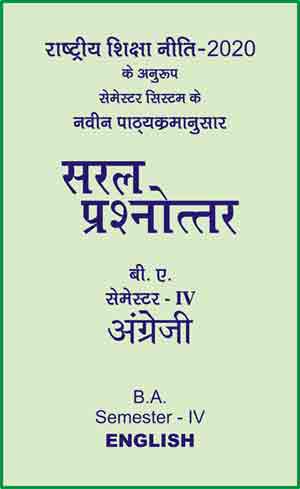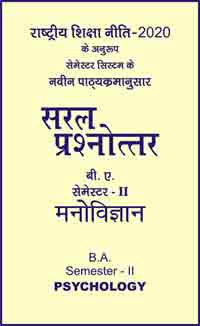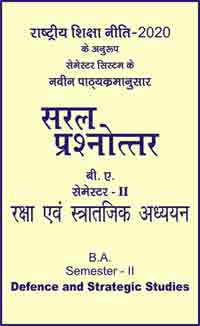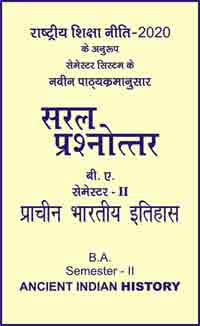|
बी ए - एम ए >> बीए सेमेस्टर-4 अंग्रेजी बीए सेमेस्टर-4 अंग्रेजीसरल प्रश्नोत्तर समूह
|
5 पाठक हैं |
|||||||
बीए सेमेस्टर-4 अंग्रेजी - सरल प्रश्नोत्तर
Important Facts to Remember
Translation comes from Latin translatus meaning to transfer' (Simpson and Weiner 1989, p. 410).
Translation is one of simple and effective ways to understand another language easily. In order to understand the message from another text accurately, a translator should have knowledge both source and target language. Therefore, a deep understanding of translation will help in doing a good translation text.
Translation is the comprehension of the meaning of a text and the subsequent production of an equivalent Text, likewise called a "translation," that communicates the same messagein another language. The text that is translated is called the source text, and the language that it is translated into is called the target language. The product is sometimes called the target text.
The English term translation, first attested in around 1340, 2 derives either from Old French translation or more directly from the Latin translation ('transporting), itself coming from the participle of the verb transferred ('to carry over').
Translation means converting written information from one language into another. Conversion is not restricted to written text. For example, text can be converted to a CD, DVD or sound file.
Translated information is aimed at communities or individual clients with limited English proficiency.
Translated resources can be produced in different formats, such as brochures, posters, newsletters and magazines, and audio and audio-visual formats. The format should be considered jointly with the method of distribution. For example, a translation produced as an audio file could be accessed from the organisation's website or played as a community announcement on an ethnic radio station. A translated brochure could be distributed through a peak ethno-specific organisation or left in the waiting area of services.
Translation has always allowed communication between different linguistic communities andthe dissemination of new information.
Before arriving at speech and writing, the first men developed communication by signs, sounds and mimics. This development took place in different places, in different times, between more or less distant groups. This favored the birth of language families (languages with the same roots) which are divided into about thirteen main groups:
1. Niger Congo (1,542 languages) (21.7%)
2. Austronesian (1,257 languages) (17.7%)
3. Trans New Guinea (482 languages) (6.8%)
4. Sino-Tibetan (455 languages) (6.4%)
4/ B.A. (IV Semester)
5. Indo-European (448 languages) (6.3%)
6. Australian [dubious] (381 languages) (5.4%)
7. Afro-Asiatic (377 languages) (5.3%) al
8. Nilo-Saharan [dubious] (206 languages) (2.9%)
9. Oto-Manguean (178 languages) (2.5%)
10. Austroasiatic (167 languages) (2.3%)
11. Tai Ikadai (91 languages) (1.3%)
12. Dravidian (86 languages) (1.2%)
13. Tupian (76 languages) (1.1%)
When people started to move around, they realized that they could not always communicate with others as they wished. So the need for interpreters arose, and with the advent of writing the need for translators.
There are many ways to translate from one language to another. The easiest way seems to be to translate one word for another and see what happens. Unfortunately, it's not as simple as that. Who hasn't tried to translate a text
using an automatic translator on the Internet? Those who have, can confirm that the result is not always understandable. No matter how well programmed a machine is, it will never be able to convey the facets and emotions of a text written by a person. The human factor is missing, hence the need for a translator.
Languages are of strategic importance to people and the planet and play a vital role in development. They are a guarantee of cultural diversity and intercultural dialogue, and a means of achieving quality education for all, strengthening cooperation, building inclusive knowledge societies, preserving cultural heritage and mobilizing political will to apply the benefits of science and technology for sustainable development.
Every year in September, translation is celebrated around the world on World Translation Day. Many people may wonder why translation is so important that it has a day dedicated to it. It was in 2017 that the UN General Assembly designated September 30 as International Translation Day. September 30 marks the death of St. Jerome, a translator of the Bible who was recognized as the patron saint of translators.
St. Jerome was a monk, born in Stridon, a community that at the time was part of northeast Italy. His ancestors were Illyrians, so Jerome's mother tongue was an Illyrian dialect. He continued his studies in philosophy in Rome where he learned Latin. Later, during his travels and in the course of his life, he became proficient in Greek and Hebrew. He is best known for his translation of the Greek version of the Bible into Latin and his partial translation of the Gospel from Hebrew into Greek.
In addition to being a means of communication, translation plays an important role in overcoming language barriers. It is a way to communicate with others in different languages within the same company.
Translation allows us to highlight the differences in lexical structure and syntactic structure between two languages and thus contributes to the learning of the foreign language.
The difficulties inherent in translation are numerous, they can concern, for example, grammar, culture or contex. This requirement makes it difficult to translate from a large number of different languages, because a culture is acquired over the long term.
Even if we don't always notice it in our daily lives, translation is a very important part of our society. Its main function is to make a document or knowledge available to as many people as possible, especially to those who do not understand the language of the original document
Translation is duly present in everyday life. Although we pay little attention to it, we are confronted with translation every day. This is the case, for example, when assembling a piece of furniture. In this case, it is important to have an instruction manual available in the language you use. This. allows you to assemble it quickly and correctly while taking advantage of all the information and advice given by the manufacturer. It could indeed be frustrating to buy a piece of furniture and not be able to assemble it because you don't understand the assembly instructions.
Translation is very important in the entertainment world. Whether it's literature, movies, television or even video games. Translation is very important; it makes a work accessible to everyone. For example, if you can watch so many series and movies, it is primarily because they have been translated. You can then enjoy the translation in the form of subtitles or voice-overs.
Language translation is essential in today's globalized world. People are more connected than ever, and the medium of text plays a critical role. From the United Nations General Assembly to the translation of medical reports, language plays a critical role. Translation conveys language in a readable medium that retains the original meaning. The importance of translation is more critical than ever.
Translation allows people to learn about other cultures. Thoughts, meanings, and ideas can be shared through translation. We come to understand the principles, traditions, and values of other cultures and their accumulated wisdom. Translation opens the door to a vast amount of knowledge that would otherwise remain embedded and isolated from the rest of the world.
|
|||||














